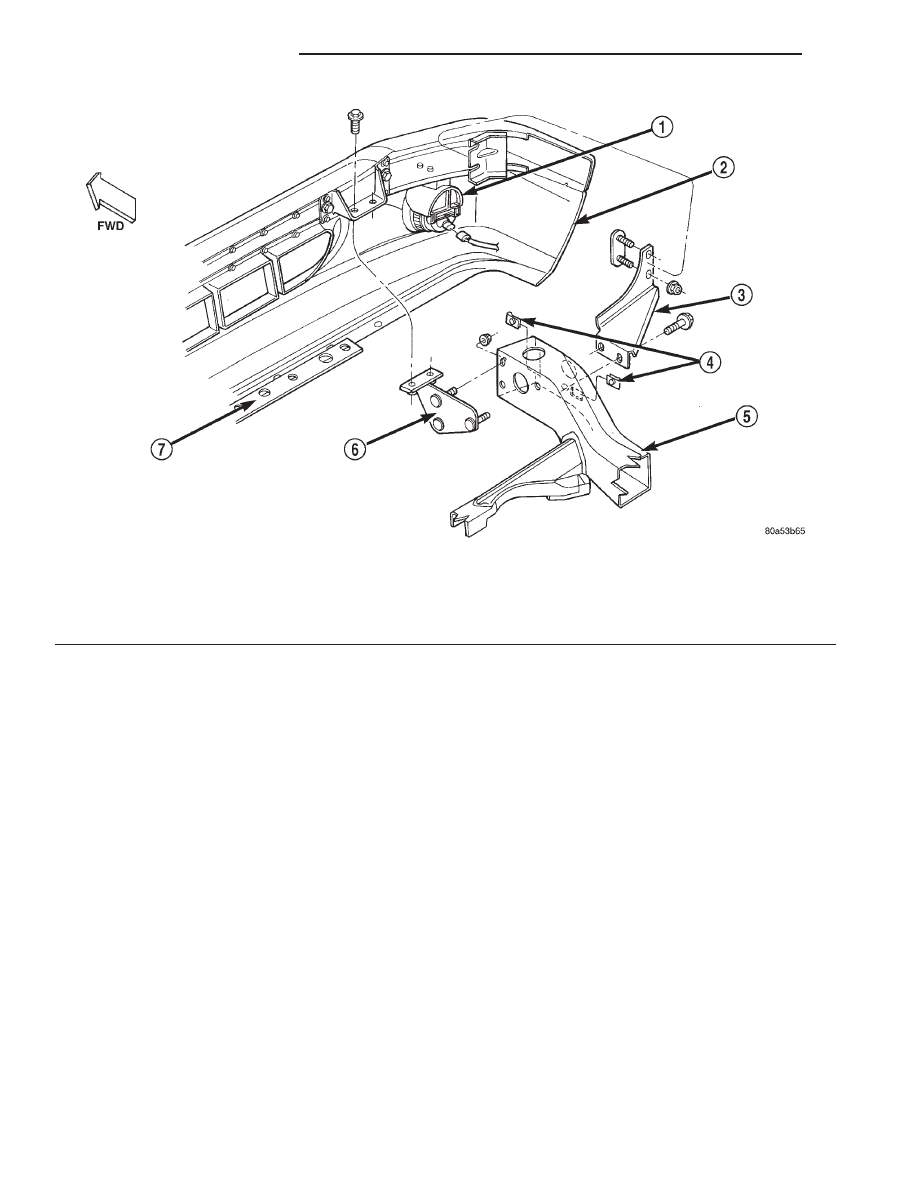Dodge Durango (DN). Manual - part 6

FRONT BUMPER INNER BRACKET
REMOVAL
(1) Remove bolts attaching top of bumper to
bumper bracket.
(2) Remove nuts attaching inner bumper bracket
to frame (Fig. 1).
(3) Using a shallow socket and extension or equiv-
alent, tap with a hammer to drive inner bumper
bracket studs out of frame.
(4) Separate inner bumper bracket from frame.
INSTALLATION
(1) Position
inner
bumper
bracket
studs
into
frame.
(2) Install nuts attaching inner bumper bracket to
frame. Tighten nuts to 94 N·m (70 ft. lbs.) torque.
(3) Install bolts attaching top of bumper to bumper
bracket.
FRONT BUMPER FASCIA
REMOVAL
(1) Remove the front bumper.
(2) Remove the bolts attaching the fascia to the
bumper.
(3) Separate fascia from bumper.
INSTALLATION
(1) Position fascia on bumper.
(2) Install the bolts attaching the fascia to the
bumper.
(3) Install the front bumper.
REAR BUMPER
REMOVAL
(1) Remove trailer hitch, if equipped.
(2) Raise and support the rear of the vehicle.
(3) Support the bumper.
(4) Remove rivets at each side rear wheel well.
(5) Disconnect license plate lamp wiring harness.
(6) Remove nuts attaching bumper support brack-
ets to rear rails and crossmember (Fig. 2).
(7) Remove the bumper/fascia from the vehicle.
INSTALLATION
(1) Position the bumper/fascia on the vehicle.
Fig. 1 Front Bumper
1 – FOG LAMP
2 – FRONT BUMPER
3 – OUTER BUMPER BRACKET
4 – U-NUT
5 – FRAME
6 – INNER BUMPER BRACKET
7 – FASCIA BRACKET
13 - 2
FRAME AND BUMPERS
DN
REMOVAL AND INSTALLATION (Continued)